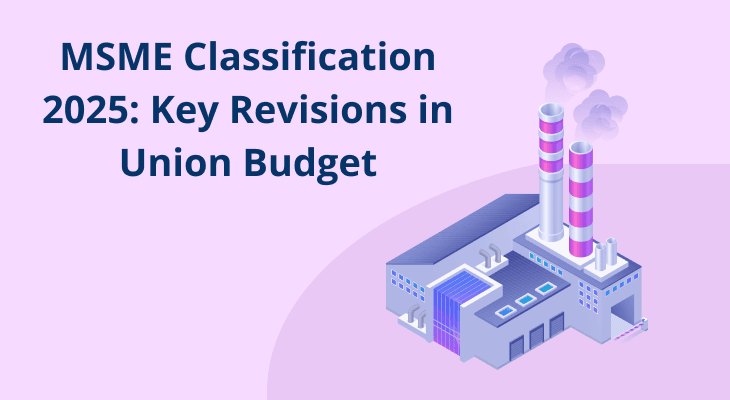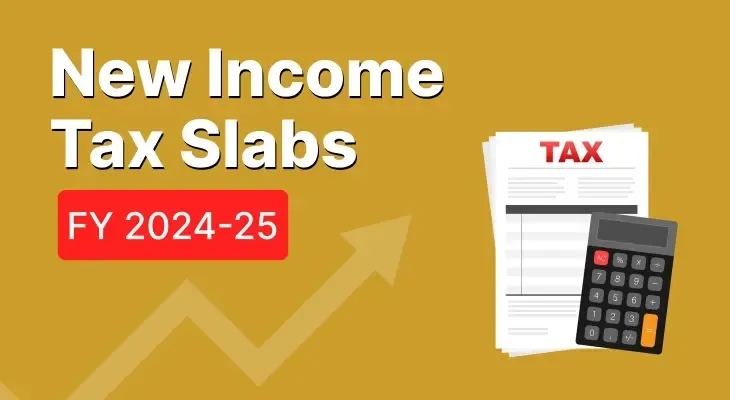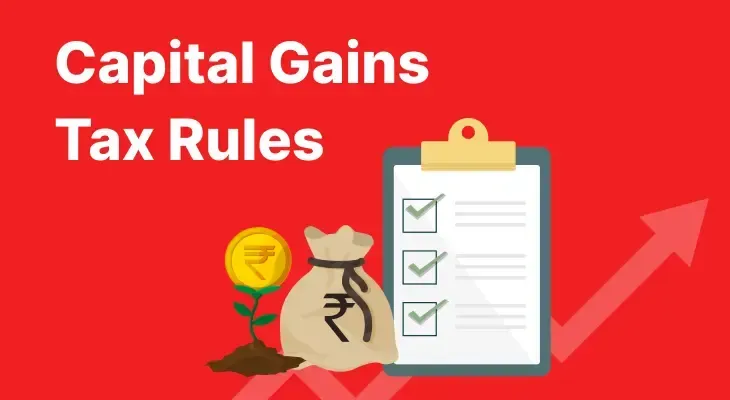
MSME Classification 2025: Key Revisions in Union Budget
The Micro, Small, and Medium Enterprises (MSME) sector serves as a cornerstone of India's economy, significantly contributing to employment, manufacturing output, and exports. In the Union Budget 2025, the government has introduced crucial amendments to the MSME classification criteria along with other initiatives that aim to boost growth and provide enhanced support for these enterprises.
Overview of MSMEs in India and Their Economic Significance
MSMEs are instrumental in driving India's economic engine. According toAs per a government press release, there are close to 6 cCrore MSMEs registered in India that, directly or indirectly, employ over 25 cCrore people, playing a vital role in providing livelihoods across urban and rural areas. The sector contributes close to 36% of the country's manufacturing output while accounting for nearly 45% of India's exports.
These enterprises not only bolster economic development but also promote equitable distribution of wealth by fostering entrepreneurship at the grassroots level.
Government's Focus on MSME Growth in Union Budget 2025
Recognising the critical role of MSMEs, the government has been putting forth various policies that aim to further aid the overall growth of such enterprises. In continuation tof this trend from the last budget, Union Budget 2025 has outlined several initiatives to support and expand this sector:
- Increased Budgetary Outlay: The Ministry of MSME has proposed an estimated budgetary outlay of ₹ 23,168 Crore, further demonstrating the government’s commitment to boost smaller business and startups.
- Enhanced Credit Guarantee Scheme: The government has increased the credit guarantee cover, facilitating easier and higher access to funds for MSMEs and enabling their expansion. For MSMEs, this cover has been increased to ₹ 10 Crore from ₹ 5 Crore. For startups, the new limit is ₹ 20 Crore, double of the previous ₹ 10 Crore. Furthermore, MSMEs involved in exporting goods and/or services can avail of term loans of up to ₹ 20 Crore. Another line of credit, of ₹ 5 Lakh, is being offered to micro enterprises that are registered under the UDYAM scheme.
- Simplification of Compliance: Efforts have been made to streamline regulatory processes, reducing the compliance burden on MSMEs and fostering a more business-friendly environment.
- Dedicated Support for Key Industries: The budget introduces dedicated schemes for key industries within the MSME sector, aiming to bolster their growth and integration into global value chains. For example, the Scheme of Fund for Regeneration of Traditional Industries (SFURTI) has been launched to support the traditional arts and handicrafts sector and associated businesses.
Revised MSME Classification Criteria
A significant highlight of the budget is the revision of the MSME classification criteria, specifically concerning investment and turnover limits. The updated criteria have been adjusted to accommodate the evolving business landscape and to include more enterprises under the MSME umbrella.
Category | Previous Investment Limit | Revised Investment Limit | Previous Turnover Limit | Revised Turnover Limit |
Micro | Up to ₹ 1 Crore | Up to ₹ 2.5 Crore | Up to ₹ 5 Crore | Up to ₹ 10 Crore |
Small | Up to ₹ 10 Crore | Up to ₹ 25 Crore | Up to ₹ 50 Crore | Up to ₹ 100 Crore |
Medium | Up to ₹ 50 Crore | Up to ₹ 125 Crore | Up to ₹ 250 Crore | Up to ₹ 500 Crore |
- Turnover Limits: The MSME turnover limits have been doubled, allowing businesses with higher revenue to qualify as MSMEs and benefit from associated schemes.
- Investment Limits: MSME investment limits have been increased by 2.5 times, enabling enterprises with greater capital investments to fall within the MSME classification.
Impact of the Changes on the Growing MSME Sector in India
The revised classification is poised to have several positive implications:
- Inclusion of Larger Enterprises: By raising the limits, more businesses can avail themselves of MSME benefits, facilitating smoother transitions as they scale operations.
- Enhanced Access to Financial Support: With higher thresholds, a broader range of enterprises can access government schemes, credit facilities, and subsidies designed for MSMEs.
- Encouragement of Growth and Formalisation: The new criteria incentivise informal businesses to formalise their operations to benefit from government support, thereby increasing transparency and compliance.
- Competitiveness in the Global Market: Enhanced support and resources can improve the competitiveness of Indian MSMEs in the global arena, promoting exports and integration into international supply chains.
What the Future Holds for MSMEs
The government's proactive measures signal a robust commitment to nurturing the MSME sector. Looking ahead:
- Digital Transformation: Emphasis on digitalisation will enable MSMEs to adopt new technologies, improving efficiency and market reach.
- Skill Development: Investments in skill development programs will equip the workforce with necessary competencies, enhancing productivity.
- Market Diversification: Encouraging MSMEs to explore diverse markets, both domestically and internationally, will reduce dependency on limited customer bases.
- Sustainable Practices: Promoting sustainable and environmentally friendly practices will ensure long-term viability and compliance with global standards.
The revised classification and supportive measures in the Union Budget 2025 are anticipated to empower MSMEs, fostering innovation, competitiveness, and inclusive economic growth in India.


